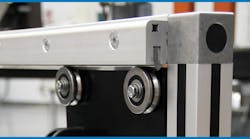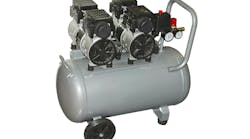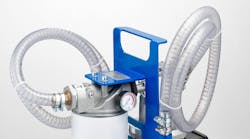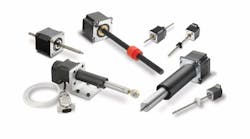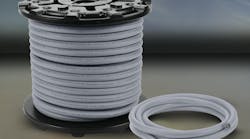One of the challenges that face motion-control engineers is how to properly select a motor. If the motor is undersized or too small, it will not handle load. If the motor is oversized or too large, the motor will be too expensive in terms of purchase point and operation. Accurately sizing the motor can help prevent either of these scenarios from occurring.
Inertia
One of the primary challenges in motion control is overcoming inertia. Inertia is an object’s tendency to resist changes in acceleration. Overcoming inertia is a constant struggle for engineers, especially on assembly machines that have short motion cycles but require very high speed. A motor needs to supply sufficient force in a linear system, or torque in a rotational system, to change the acceleration of the load in a controlled manner.
The first step in properly sizing a motor is to calculate the load inertia. For example, a rotating mass’ moment of inertia (J) can be determined by:
This describes the moment of inertia for a point mass (m) at specific distance (r) from the rotation axis. The formula can be used to build up moment of inertia for complex shapes like cylinders, disks, spheres, and blocks. Load inertia is reflected back to the motor shaft from the load and the components in between. The value should include any extra mechanical elements that motor is responsible for moving. This could mean parts such as screws, pulleys, belts, or couplings. These additional moving parts will demand higher performance from the system.
Finding the appropriate analytical expression for complex systems depends on the weight, factoring in acceleration due to gravity, rather than just the mass of the parts. The motor-sizing process requires the total system inertia, including both the load inertia and the motor inertia. The tendency of many engineers is to only calculate the actual load and gearbox into the inertia while leaving out the weight and inertia of the belts, pulleys, and other mechanical components.
